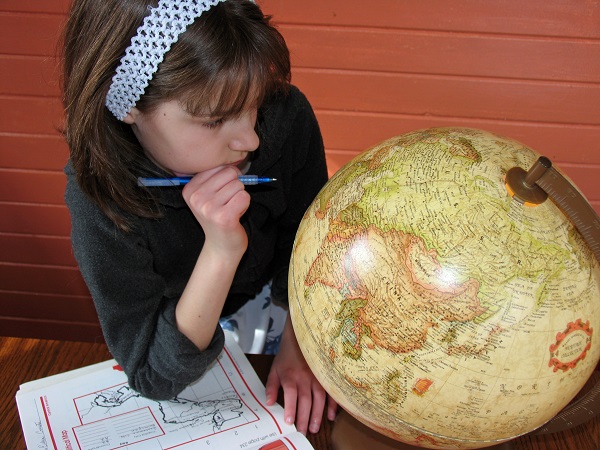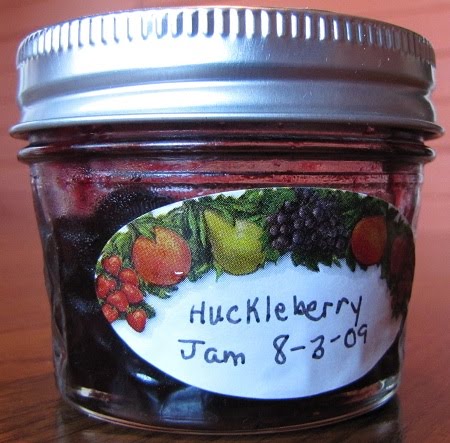
E studying Geography
When I read the Squidoo lens, Interesting Facts About George Washington, I thought of the moms I know who are considering homeschooling their little ones, are beginning to think about curricula, and “how” they plan to homeschool their children. The lens reminded me of the methods I’ve used to homeschool my girls. I’ve taught by what is considered an eclectic style, with some Charlotte Mason thrown in. I’ve never been much on using curricula with the exception of Stan Schmidt’s, Life of Fred. Stan’s philosophy is that kids need to read and think, not just solve problems on a page.
When my girls were small, I used holidays and special days – President’s Day, Valentine’s Day, 4th of July, Thanksgiving, Election Day, etc. – as opportunities for learning. We’d talk about facts, do worksheets, and have discussions about the date. All of this was done on a shoestring, with little money out-of-pocket. Resources from the internet, library, and books (new and used), have provided my girls a well-rounded education.
With all of that being said, my two youngest daughters have been homeschooled all of their lives. Now 16 and 17 years old, their learning has been independent of me for quite a while. While guiding them to what subjects to learn, sites like Khan Academy have opened up a range of topics for them to explore. They’ve also taken it upon themselves to delve into great works of literature and have encouraged me to read Tolstoy, for which I am doing for the first time.
Learning How to Learn
Ah, my husband and I have succeeded in teaching them to learn how to learn! The goal has been reached.They are prepared for a life of learning.
You don’t need a degree to be a good teacher. All you need is the willingness to teach your children. A homeschool education can afford your children the chance to learn at their own rate, in their own time, without the indoctrination of a government school. Yes, milestones should be reached – legible handwriting, reading in complete sentences, knowing one’s multiplication tables, historical lessons, and so on. But without the restrictions that a traditional classroom environment imposes on students, the possibilities for education are endless.
First and foremost, homeschooling doesn’t begin at age 5 or 6, it begins when your children are babies. I am always befuddled by mothers with young children who ask, “When should I start homeschooling my child?” My brain shouts, “Now!” Don’t wait until what society thinks is the age that children should go to school, do what’s natural and teach them early on. Babies are learning from the time they pop-out. Discover their learning styles and roll with it when you can. Introduce traditional school subjects early, such as reading, writing, and arithmetic. I was teaching the alphabet when my girls still ate their lunch in high-chairs. Toddlers and young children are like sponges waiting to soak up knowledge. They are just waiting for your lead.
Homeschool Challenges and Socialization
As they grow and develop independence, teaching may become a challenge. Unless all of your kids are sweet little angels, homeschooling can be a roller coaster ride. Personalities conflict and smooth sailing it is not. If the day starts out wrong and you know nothing will get accomplished, forget it. You can’t squeeze blood out of a turnip. It took me a while to learn this, but when I did, the day progressed much better. And we were all much happier.
As for the question of socialization, I think it best to look at you and your husband’s social life. How do you spend your time? Are you social butterflies or do you tend to go it alone? All of our kids are weird – whether homeschooled or not (our 3 older ones went to public school). With 2 weird parents, they didn’t have much choice in the matter. It’s mostly in the genes.
My homeschoolers have had plenty of opportunity for socialization – 4 H, chess club, nature journal group, summer reading, shooting sports, Junior High Girls meetings, ice skating lessons, swimming lessons, volunteering at the library and local museum, art classes, and on and on. Surely you will find, in your community, what is comfortable for you and your family.
When all is said and done, your satisfaction will be in knowing that you have tended to your children’s education, much the same way as when planting a seed, giving it water, and watching it grow.
_________________________.
The material covered in the Squidoo lens is entertaining and makes for an outstanding tool for discussion. It’s the type of resource I would have used when teaching Mallory and Eileen about Washington’s birthday.




